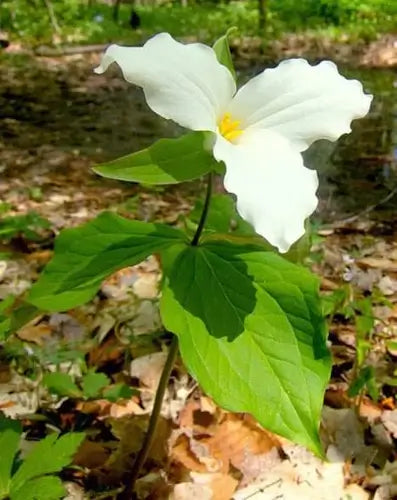Gather Your Materials
Before you begin crafting your terrarium, gathering all the necessary materials is essential. You'll need the following items:
1.1. Glass Container: Choose a clear glass container with a lid or cork stopper to create a closed or open terrarium, depending on your preference. The container's size and shape are entirely up to you, but a container with a wide opening is recommended for easy planting.
1.2. Potting Mix: Opt for a well-draining mix that suits the plants you intend to include. This guide will use a combination suitable for ferns, moss, and other woodland plants.
1.3. Activated Charcoal: Charcoal helps to filter the air and prevent mold or odors from developing inside the terrarium.
1.4. Gravel or Pebbles: A layer of gravel at the bottom aids container drainage.
1.5. Live Moss: Moss is a key component of a terrarium, adding a lush and verdant look to your creation. You can collect it from your surroundings (ensure it's not protected or endangered) or purchase live moss from a garden center.
1.6. Ferns: Ferns are a classic choice for terrariums due to their elegant and airy appearance. Look for small fern varieties that will fit well in your chosen container.
1.7. Creeping Phlox: Creeping phlox, with its vibrant flowers, can be a great addition to your terrarium as it adds a pop of color to the space. You can choose from various phlox cultivars to match your aesthetic.
1.8. Chocolate Chip Ajuga: The unique foliage of chocolate chip ajuga provides texture and contrast in your terrarium. Consider planting this ground cover species to enhance the diversity in your ecosystem.
1.9. Small Decorative Accessories (Optional): Tiny figurines, pebbles, or miniature decorations can enhance the visual appeal of your terrarium.
Assemble the Layers
Creating layers promoting proper drainage and a balanced ecosystem is vital to a successful terrarium. Follow these steps:
2.1. Start with a layer of small stones at the bottom of the container. This layer will help excess water drain from the plant roots, preventing root rot.
2.2. Add a thin layer of activated charcoal to the gravel. The charcoal will keep the terrarium's environment fresh by absorbing impurities and odors.
2.3. Add a layer of potting mix over the charcoal, ensuring it's deep enough to accommodate the roots of your plants. The depth should vary depending on the size of your container and the plants you're using.
Plant Your Terrarium
3.2. add live moss around the ferns and other open terrarium areas. Moss adds a touch of greenery to the landscape and helps maintain moisture levels.
3.3. Plant the creeping phlox similarly, placing them in spots where you want to introduce color and texture. Space them evenly, but be mindful not to overcrowd the terrarium.
3.4. Lastly, position the chocolate chip ajuga, providing visual contrast with its distinctive foliage. This ground cover plant is ideal for filling gaps and creating a layered appearance.
Decorate Your Terrarium (Optional)
If you want to add a personal touch to your terrarium, consider adding small decorative accessories like figurines, pebbles, or miniature furniture. These elements can bring a sense of whimsy and creativity to your glass garden. Arrange them to your liking, being careful not to disturb the plants.
Maintain Your Terrarium
Now that your terrarium is complete, it's essential to understand how to care for it to keep your mini ecosystem thriving:
5.1. Watering: Terrariums are relatively low-maintenance, but they do require some attention to watering. The closed terrariums will create their water cycle, so you'll need to water them less frequently. When opening terrariums, check the soil's moisture level and water it only when it feels slightly dry to the touch. It's important not to overwater your plants to avoid mold and root rot.
5.2. Light: Place your terrarium in indirect sunlight or bright, filtered light. Avoid exposing your plants to direct sunlight through glass, as it can magnify heat and damage them.
5.3. Pruning: Trim back any overgrown or dead foliage to maintain the terrarium's aesthetic appeal and prevent overcrowding.
5.4. Cleaning: Occasionally wipe the inside of the glass with a damp cloth to remove condensation or dust buildup.
5.5. Repotting: As plants grow, they may outgrow the terrarium.
Creating a terrarium with live moss, ferns, creeping phlox, and chocolate chip ajuga is delightful and rewarding. These charming glass gardens allow you to bring a piece of the natural world into your home while requiring minimal upkeep. Embark on a journey to design and nurture your miniature ecosystem, providing a beautiful and tranquil addition to your living space. Enjoy watching your terrarium flourish and thrive, bringing the wonders of nature indoors for your daily enjoyment.


























































 " alt="Featured Collection Perennials " />
" alt="Featured Collection Perennials " />
 " alt="Featured Collection Ferns " />
" alt="Featured Collection Ferns " />
 " alt="Featured Collection Live Moss " />
" alt="Featured Collection Live Moss " />
 " alt="Featured Collection Trees " />
" alt="Featured Collection Trees " />
 " alt="Featured Collection Shrubs " />
" alt="Featured Collection Shrubs " />
 " alt="Featured Collection Vines " />
" alt="Featured Collection Vines " />
